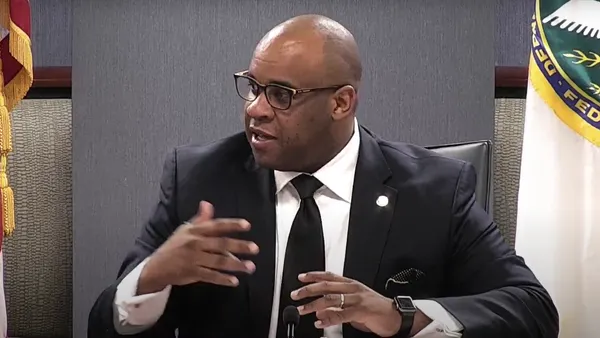Dive Brief:
- California’s investor-owned utilities — Pacific Gas & Electric Co., San Diego Gas & Electric Co. and Southern California Edison – oppose Sunnova Energy International’s proposal to build microgrids in new residential communities, according to filings released Tuesday by the California Public Utilities Commission.
- California lacks rules for “micro-utilities” like those Sunnova is proposing, the utilities told the PUC in separate filings, noting the commission has an ongoing rulemaking process on microgrids that could set rules for commercial microgrids.
- The Utility Reform Network, the Public Advocates Office at the CPUC, the Coalition of California Utility Employees, the Sonoma Clean Power Authority and the Peninsula Clean Energy Authority also opposed or protested the proposal, while the California Solar & Storage Association supports it.
Dive Insight:
The debate centers on Sunnova’s early September proposal that Sunnova Community Microgrids California be allowed to build and run microgrids in new master-planned residential communities that consist of about 500 to 2,000 homes as well as nonresidential facilities such as schools and streetlights.
Each home would have rooftop solar and battery storage and would be part of a community microgrid that would include a community-scale photovoltaic system, energy storage and emergency generation, according to the application for a certificate of public convenience and necessity.
A typical 500-home microgrid would have 4 MW of solar, 7 MW of storage and a 2-MW backup generator system, Sunnova said.
The proposal supports California’s grid reliability, resiliency, climate and equity goals, according to the Houston-based company.
California’s IOUs, while noting they generally support microgrids, contend that Sunnova’s proposal is flawed.
The proposal fails to account “for the commission’s and SCE’s role in the development, deployment, and operation of microgrids in its existing service area and is seeking to duplicate SCE’s service — but with little to no regulatory oversight from this commission — which is not in customers’ or the state’s interest,” SCE, based in Rosemead, California, said in its comments.
IOUs must be involved in the deployment of microgrids in their service areas, according to the utility.
“SCE needs to be able to identify where microgrids would be most effective in addressing local reliability and resiliency needs in consideration of planned uses of its distribution system,” the utility said.
Like PG&E and SDG&E, SCE said the application was premature given the CPUC’s effort to develop a framework for utility deployment and operation of microgrids in Track 4 of the commission’s pending microgrid rulemaking process.
Sunnova failed to show that a web of micro-utilities that fragment IOU service areas is necessary or appropriate, or that the structure under consideration in the microgrid rulemaking won’t provide commercial microgrid opportunities, SCE said.
The ratepayer advocate’s office echoed some of the utility concerns, noting that Sunnova is proposing to sell electricity through private contracts that would be outside CPUC scrutiny.
The commission should consider delaying its review of Sunnova’s proposal until the agency establishes a regulatory framework for multi-customer microgrids, the ratepayer advocate’s office said.
Meanwhile, the California Solar & Storage Association urged the CPUC to approve Sunnova’s proposal.
“Allowing communities to build resilient, clean energy microgrids that can be optimized to support an entire community’s needs, like those proposed in the [Sunnova] application, is a practical solution that leverages economies of scale to help bring down costs without compromising reliability or resiliency,” the trade group said.















